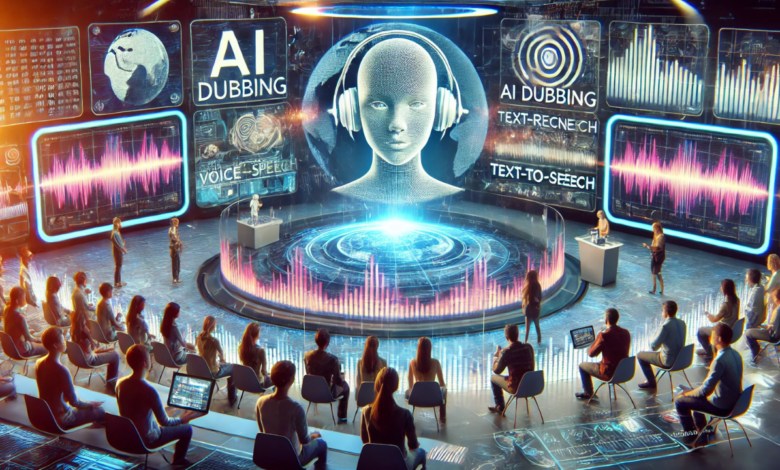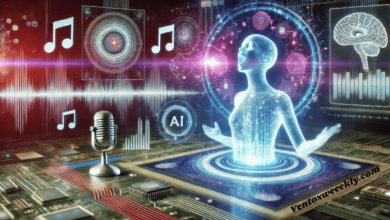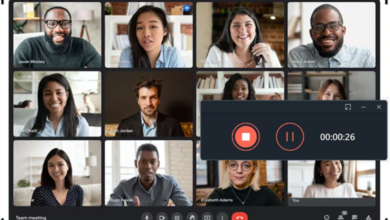How AI Dubbing is Making Multilingual Content Accessible to All

In today’s interconnected world, multilingual content has become more important than ever. From businesses to entertainment and education, the ability to reach audiences across different languages has become a crucial element of success. However, creating content that resonates with global audiences is not always straightforward. Traditional dubbing and translation processes can be time-consuming and expensive, creating significant barriers for smaller businesses or content creators.
Enter AI dubbing—a revolutionary technology that is transforming the way we approach multilingual content. By using artificial intelligence to replicate human speech and seamlessly translate content, AI dubbing is breaking down language barriers and making content accessible to audiences all over the world. In this blog, we will explore how AI dubbing is reshaping the content landscape and why it is becoming a game-changer for businesses and creators alike.
What is AI Dubbing?
AI dubbing is a process where artificial intelligence technology is used to dub or translate spoken content into multiple languages. Unlike traditional dubbing, which involves hiring voice actors to record dialogue in different languages, AI dubbing uses advanced algorithms and machine learning models to synthesize speech and match it with the content’s context.
AI dubbing generally involves two key technologies:
- Speech Recognition: This technology transcribes the original speech in the video or audio content into text.
- Text-to-Speech (TTS): Once the text is created, AI systems convert it into natural-sounding speech in the target language. This is done using neural networks, which enable the AI to produce high-quality, human-like voices.
The result is an efficient and cost-effective process that can create multilingual content without the need for a large team of translators, voice actors, or audio engineers.
The Benefits of AI Dubbing for Multilingual Content
AI dubbing offers several key advantages that are transforming the way content is localized for global audiences. Let’s take a closer look at the benefits:
Cost-Effective
Traditional dubbing can be an expensive process. It typically involves hiring multiple voice actors, recording sessions, and professional sound engineers to match the dialogue with the video. This can quickly add up, especially if you’re producing content in several languages.
AI dubbing, on the other hand, eliminates much of the manual work involved in the dubbing process. Since the process is automated, businesses can dramatically reduce costs while still offering high-quality, localized content. For smaller businesses or content creators, this makes it easier to reach international audiences without breaking the bank.
Faster Turnaround Time
Time is often of the essence in the fast-paced world of digital content creation. Traditional dubbing requires scheduling recording sessions with voice actors, editing, and syncing the audio with the video. This can take days, or even weeks, depending on the amount of content.
AI dubbing, however, can significantly speed up this process. The AI system can automatically translate the script and generate the dubbed audio in a matter of hours. For businesses or creators with tight deadlines, AI dubbing offers a rapid solution to create multilingual content quickly and efficiently.
Consistency in Voice and Tone
Another benefit of AI dubbing is its ability to maintain consistency in voice and tone across different languages. When dubbing content traditionally, it’s common for the tone or style of voice to vary depending on the voice actor. This can sometimes result in inconsistencies, especially when dubbing large volumes of content or when working with multiple languages.
AI dubbing ensures that the tone, pace, and style of the voice remain consistent, as it uses the same algorithms and models across languages. This consistency helps maintain the integrity of the original content and enhances the viewing experience for audiences.
Scalability for Global Content
As businesses and creators expand their reach, the demand for content in multiple languages grows. AI dubbing allows for scalability in content creation. Whether you are creating educational materials, advertisements, or entertainment content, AI dubbing can help you easily adapt your content to multiple languages and cultures. This scalability is especially beneficial for businesses looking to enter new international markets without investing significant resources in hiring translators and voice actors for every language.
How AI Dubbing is Breaking Language Barriers
AI dubbing is not just making content faster and cheaper to produce; it is also helping to break down language barriers that have historically limited the reach of content. Let’s explore how AI dubbing is enabling global access to content:
Enhancing Global Reach for Brands
For businesses looking to expand their customer base, multilingual content is essential. While English is widely spoken, there are millions of people around the world who prefer to consume content in their native language. With AI dubbing, businesses can now create content that speaks directly to different regions and audiences, improving engagement and driving sales.
Whether it’s marketing videos, product demos, or promotional content, AI dubbing allows businesses to effectively communicate their message to a global audience. This helps improve brand recognition, increase customer loyalty, and ultimately expand market share.
Making Educational and Training Materials Accessible
AI dubbing is also having a significant impact on the education sector. Online learning platforms, tutorials, and training materials can now be easily translated into various languages, ensuring that educational content is accessible to people around the world. For example, a course offered in English can be dubbed into French, Spanish, or Hindi, opening up learning opportunities for a wider audience.
In addition, AI dubbing can assist in real-time training sessions, making the content more interactive and easier for students to understand. This ability to create localized learning materials is particularly valuable for businesses offering training programs across different regions.
Supporting Entertainment and Media
In the entertainment industry, AI dubbing is helping to make movies, TV shows, and streaming content accessible to global audiences. With the rise of international streaming platforms, content is often dubbed into multiple languages to cater to different markets.
Traditional dubbing can be time-consuming and expensive for large-scale productions. AI dubbing, however, allows for quicker turnaround times and lower costs. Moreover, AI systems can ensure that dubbed content retains the original meaning and emotional tone, providing a seamless viewing experience for international audiences.
AI Dubbing vs. Traditional Dubbing: A Comparison
When comparing AI dubbing to traditional dubbing, several key differences stand out.
Cost and Time Efficiency
Traditional dubbing requires multiple resources, including voice actors, recording studios, and editors. This process can be time-consuming and costly, especially when dubbing content into several languages.
AI dubbing, on the other hand, automates much of the process, reducing both time and cost. With AI and free artificial intelligence tools, businesses can scale their localization efforts without needing to invest in expensive resources.
Accuracy and Quality
While AI dubbing has come a long way, it still has some challenges compared to traditional dubbing. Human voice actors bring a unique touch of emotion, inflection, and cultural understanding that AI systems may struggle to replicate.
However, with advancements in deep learning and neural networks, the quality of AI dubbing has improved significantly. AI can now produce highly accurate translations that preserve the original message and tone of the content, and it is constantly improving with every new iteration.
Accessibility and Personalization
AI dubbing offers greater flexibility and personalization. With traditional dubbing, voice actors are generally limited to the languages they speak. AI, however, can generate voices in almost any language or accent, offering businesses and creators a wide range of options.
Additionally, AI dubbing systems can personalize content by offering different voice types or regional dialects, making it more relatable to specific audiences.
The Future of AI Dubbing: Trends and Innovations
The future of AI dubbing looks promising, with continuous improvements in AI and machine learning technology. Some key trends to watch out for include:
Deep Learning and Neural Networks in AI Dubbing
As deep learning algorithms continue to evolve, AI dubbing will become even more accurate and expressive. Neural networks are enabling AI to understand and replicate human emotions, making AI-generated voices sound more natural and engaging.
AI Dubbing in Real-Time Translation
AI dubbing is expected to play a significant role in live events, conferences, and streaming. Real-time translation and dubbing are becoming increasingly important in a globalized world where audiences expect immediate access to content in their native languages.
Expansion into Niche Languages
One of the biggest challenges in traditional dubbing is the lack of resources for lesser-known languages. AI dubbing, however, can easily expand into niche languages, making content accessible to even the smallest communities.
Challenges and Considerations in AI Dubbing
Despite its many advantages, AI dubbing does come with challenges. Some concerns include:
Language Nuances and Cultural Sensitivity
AI may struggle to understand subtle language nuances, idiomatic expressions, and cultural context. As a result, translations may not always capture the true meaning or tone of the original content.
Quality Control and Ethical Concerns
There are also ethical considerations surrounding AI-generated voices. Issues such as voice cloning and misrepresentation could become concerns as AI dubbing technology becomes more sophisticated.
Conclusion
AI dubbing is rapidly changing the landscape of multilingual content, making it more accessible, affordable, and efficient for businesses, educators, and content creators. As the technology continues to evolve, it will play a critical role in breaking down language barriers and opening up new opportunities for global engagement. By leveraging AI dubbing, businesses and creators can ensure their content reaches a broader audience, driving growth and fostering deeper connections across cultures.
If you’re looking to make your content accessible to a global audience, now is the time to explore the potential of AI dubbing and take your content strategy to the next level.




